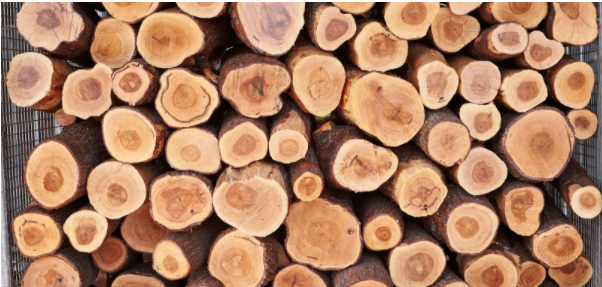
Sandalwood can tell the narrative of human history. Sandalwood has been venerated for thousands of years for its medicinal and fragrant qualities, dating back to the period of ancient monarchs and civilizations.
Tipu Sultan, the king of Mysore at the time, designated Mysore’s native Indian sandalwood a “Royal Tree” in 1792. Sandalwood and its oil were and still are regarded as the equal of gold in Mysore. Sandalwood is now the world’s highest-valued wood.
There are sandalwood species endemic to India, Malaysia, Australia, New Zealand, Polynesia, and even Hawaii.
The most valuable sandalwood kind is Indian sandalwood (Santalum album). It has the largest concentration of a-sotalol and b-sotalol, the chemical components responsible for the rich woody-floral fragrance of sandalwood. It is b-sotalol that gives Indian sandalwood essential oil its antibacterial properties.
While sandalwood is occasionally collected for its wood, its most valuable commodity is sandalwood aromatherapy oils. Sandalwood essential oil is made by grinding sandalwood roots and heartwood, the thick core portion of the tree’s trunk, into a powder, which is then steam distilled to extract the essential oil.
It requires at least 7 years for a sandalwood tree to produce aromatic heartwood in the wild. Before being harvested, most sandalwood trees are allowed to bloom for at least 15 to 20 years, allowing the prized heartwood to expand to a bigger size.
Sandalwood trees are hemiparasitic, which means they can only grow if they are linked to a suitable host tree for water and nutrients.
Because both the roots and the trunks of a sandalwood tree are precious, it is frequently uprooted for harvest, with extra operations to segregate the sandalwood from the wood of its host tree.
Sandalwood has been used in religious rituals and traditional medicine since pre-Christian times, and it is still sought for (roughly) the same reasons today. Sandalwood incense is utilized during supplication and thought in Buddhism, and it is prized for its ability to calm and strengthen the mind. The wood was imported by ancient Egyptians for use in medicine, conservation, and entombment, as well as for ritualistic consumption to appease divine creatures.
Sandalwood has a long history of usage in perfumery, beauty, and sex, in addition to religious rites and traditional medicine.
For centuries, sandalwood oil and paste have been utilized in Arabic and Indian perfumes. It’s classified as an ‘East Asian Aroma” belonging to a group of exotic and opulent scents. Sandalwood oil not only adds a delightful, spicy warmth to a perfume, but it’s also a powerful fixative, capable of stabilizing portions of a perfume that might otherwise evaporate and fade.
Sandalwood oil and powder are valued for their embellishing properties. Sandalwood oil is a characteristic astringent, so is regularly utilized in toners, cleaning agents, and lotions to oversee sleek skin and decrease the presence of pores. Specialists of Ayurveda use sandalwood oil and powder-based covers to assist with overseeing skin break out and dark circles under the eyes.
Sandalwood trees have only one life. When harvested, they are generally uprooted, which destroys the tree. To yield more sandalwood, a new tree must be planted, which takes several years to mature. Sandalwood, especially Indian sandalwood, came alarmingly near to extinction because wildlife populations were taken quicker than they could be regenerated organically.
Recognizing the impracticality of sandalwood harvesting, state-run administrations all over the world have established regulations and standards to protect their wild sandalwood woodlands. Farms have been established to help reduce reliance on wild sandalwood trees by providing another choice, controllable source of sandalwood.
These sustainable sandalwood farms, such as the one on which we rely for Heartwood sandalwood, represent the industry’s future. They will assist to guarantee that future generations may experience the elegance and advantages of sandalwood in the same way that we do now and the ancients did long before us.
SiriDharini offers you an opportunity to experience the royalty of sandalwood trees.
Being a projection of agro realty modal SiriDharini allows you to express your gratitude for the earth by employing green farming practices that transform exhausted drylands into sustainable farmland by improving soil health and removing atmospheric carbon. Cultivating 6 different types of timbers essentially sandalwood trees and mahogany trees. Our farming professionals with exceptional knowledge of sustainable farming practices manage the entire cultivation process.
For more information visit our website https://siridharini.in/ and sign up.

Recent Comments